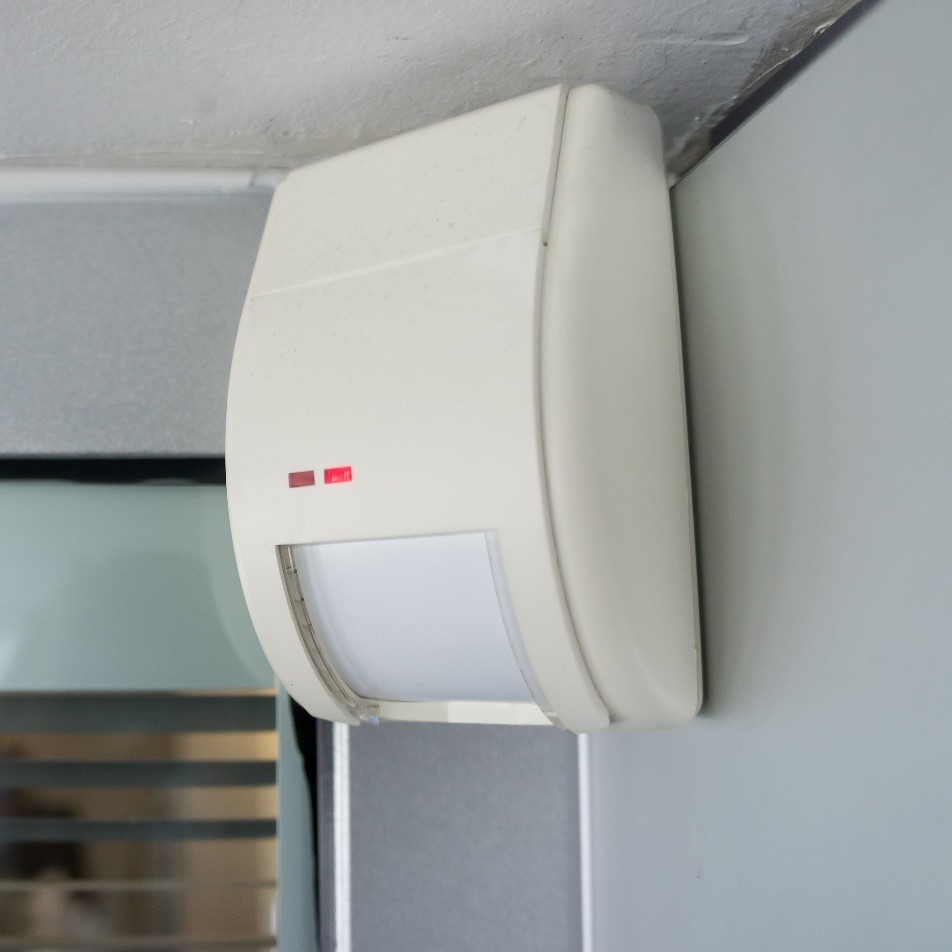The Evolution of Anti-Theft Alarms
The journey of anti-theft alarms has been marked by significant evolution. From simple, noisy devices, they have transformed into sophisticated systems. Let’s trace back to their humble beginnings. Initially, anti theft alarms were basic bell-based systems. These alarms used to trigger a loud bell or siren when someone tampered with a lock or a protected object.
Over time, these bells became more advanced. Manufacturers began to integrate circuit-based technology. The alarms could then detect a break-in through electrical signals. As thieves got smarter, so did the alarms. They started to include motion detectors and pressure sensors. This marked a leap in anti-theft technology.
With the digital era, anti theft alarms went wireless. This offered more flexibility in installation and increased the range of protection. We began to see gadgets that could alert owners remotely via smartphones. Now, with AI and IoT, modern alarms not just alert owners, but also gather and analyze data. They predict potential breaches before they happen.
So, what once rang out as a simple bell now serves as a smart and connected guardian. The evolution of anti-theft alarms is a testament to innovation in security. They have become smarter, more integrated, and much more effective at deterring theft.
In the upcoming sections, we will dive into the current advancements in anti-theft technology. These improvements have continued to shape the landscape of property protection. Stay tuned as we explore how these advances meet the demands of modern security challenges.
Advancements in Anti-Theft Technology

The technology behind anti-theft alarms has seen remarkable advancements over the years. Manufacturers have focused on enhancing the effectiveness of these systems while ensuring ease of use for consumers. In recent years, the incorporation of cutting-edge technologies has made anti theft alarms not just reactive but proactive in deterring theft.
Some of the key advancements include the use of biometric recognition and artificial intelligence. Biometric technology ensures that only authorized individuals can deactivate the alarm, adding an extra layer of security. Artificial intelligence, on the other hand, allows anti theft alarms to learn from patterns and predict possible security breaches before they occur.
In addition to these, there’s been a surge in the use of mobile connectivity. Present-day alarms can send instant alerts to a user’s smartphone or tablet, providing real-time updates on the security situation. This allows for immediate action, even when the owner is not physically present.
Another significant advancement is in their integration capabilities. Modern anti theft alarms can now seamlessly integrate with other smart home devices and systems, creating a comprehensive and unified home security ecosystem.
Finally, the durability and robustness of alarms have seen improvements, making them tamper-resistant and reliable in various environmental conditions. These technological advancements present a huge leap in the capabilities of anti-theft alarms and reaffirm the commitment to creating safer homes and businesses.
Types of Anti-Theft Alarms
With the rise in burglary incidents, the market for anti theft alarms has expanded rapidly. Various types of alarms cater to different security needs. Here are some of the most common ones:
- Traditional Sound Alarms: These alarms emit a loud noise when triggered. They alert the owner and scare away potential thieves.
- Motion Detector Alarms: Equipped with sensors, they detect movement. If an intruder walks by, the alarm goes off.
- Pressure Mats: Placed under rugs or doormats, these detect pressure. If someone steps on them, the alarm activates.
- Window and Door Sensors: These alarms trigger when someone opens a door or window. They’re simple to install and use.
- CCTV with Alarms: Some CCTV systems include alarms. They activate when the camera detects unauthorized movement.
- Smart Alarms: These connect to the internet and send alerts to your phone. They often come with features like remote control and monitoring.
- Biometric Alarms: These high-tech options use fingerprints or facial recognition. Only authorized individuals can disarm them.
Each type of anti theft alarm has its benefits. The choice depends on the level of security needed and the premises’ size. From simple sound-based alarms for homes to complex biometric systems for businesses, there’s a solution for every security challenge. In the following sections, we’ll cover the features that modern anti theft alarms offer to enhance security even further.
Features of Modern Anti-Theft Alarms

Today’s anti theft alarms are equipped with various features, aimed to bolster security and provide users with peace of mind. Here are the key features that distinguish modern anti theft alarms from their predecessors.
- Smart Connectivity: Modern alarms connect to your home Wi-Fi network. This allows for real-time alerts on your smartphone or computer.
- App Integration: Most alarms come with a dedicated app. Through the app, you can arm or disarm the system, receive notifications, and monitor your property remotely.
- Automatic Responses: Some systems reach out to emergency services automatically. This feature ensures that help is on the way as soon as a threat is detected.
- Customizable Settings: Users can tailor the alarm settings to fit their needs. They can adjust the volume, choose specific alarm sounds, and set zones.
- Battery Backup: A power outage won’t compromise your security. Modern alarms have battery backups to stay operational during outages.
- Geofencing: This tech-savvy feature arms or disarms the alarm based on your phone’s location. It’s convenient for homeowners on the move.
- Multifactor Authentication: Many systems require a combination of password, fingerprint, or facial recognition to prevent unauthorized access.
- Integration with Other Devices: These alarms can work with other smart home devices. They can activate lights or lock doors in response to a security breach.
Modern anti theft alarms offer a powerful blend of convenience and robust protection. With these advanced features, homeowners and business owners can be confident in the security of their properties.
Installation and Maintenance of Anti-Theft Alarms
Installing modern anti theft alarms doesn’t need to be complex. Here’s how to do it effectively:
- Choose the Right Location: Position sensors and alarms where they can cover entry points.
- Follow the Manual: Each alarm comes with instructions. Read and follow these carefully for a successful setup.
- Test Your System: After installation, test to ensure everything works correctly.
- Secure the Wiring: If your system isn’t wireless, make sure wires are out of reach and protected.
For maintenance, a few simple steps can keep your anti theft alarm in top shape:
- Regular Checks: Test your alarm system monthly. Check batteries, sensors, and connections.
- Keep It Clean: Dust and debris can affect sensor performance. Clean them regularly.
- Updates and Upgrades: For smart alarms, install software updates as they come.
- Professional Support: Consider a yearly checkup by a professional.
By following these installation and maintenance tips, your anti theft alarm will serve you well for years to come.
Effectiveness of Anti-Theft Alarms in Preventing Theft
The effectiveness of anti theft alarms in deterring theft is significant. Studies show that visible alarms can discourage potential burglars. Alarm systems with loud sirens not only draw attention but also cause intruders to flee. Here’s a breakdown of how anti theft alarms are effective:
- Immediate Alert: When an alarm triggers, it sends an instant signal. This alerts the property owner and neighbors.
- Deterrent Factor: The presence of alarms can deter criminals from attempting a break-in.
- Police Notification: Many modern systems immediately notify local authorities, leading to swift action.
- Insurance Benefits: Alarm systems can lower home insurance rates, acknowledging the reduced risk of theft.
- Psychological Impact: The fear of getting caught due to an alarm system can dissuade burglars.
While no system is foolproof, the combination of good practices and alarm installations notably reduces theft incidents.
Integration with Smart Home Systems

The rise of smart home technology has significantly amplified the value of anti theft alarms. These alarms seamlessly integrate with various home automation systems, providing an extra layer of convenience and security. Here’s how they work together to safeguard your home:
- Unified Control Hub: Anti theft alarms are part of a centralized system. You can manage them with other devices from a single point.
- Automated Actions: When the alarm detects an intrusion, it can trigger other smart devices. Lights can turn on, and doors can lock automatically.
- Remote Monitoring: Smart home integration allows you to monitor your home security remotely. You get real-time alerts on your smartphone or tablet.
- Voice Activation: You can arm or disarm your anti theft alarm with voice commands through smart speakers.
- Log History: Smart systems maintain an activity log. You can review all security events and alarm activations.
- Energy Savings: Integrated alarms can work with smart thermostats. They turn off heating or cooling when windows open unexpectedly.
The flexibility and interoperability of anti theft alarms with smart home systems ensure a responsive and user-friendly security experience. Choosing an alarm system that fits into your smart home ecosystem is now a critical factor for many homeowners. The goal is not just to detect intruders but to create a smart home that protects itself. With these advanced integrations, securing your home becomes less about hardware and more about intelligent, adaptable solutions.
Legal Considerations and Compliance
When deploying anti theft alarms, it is important to consider legal aspects. Here’s what you need to know:
- Privacy Laws: Ensure your system respects privacy rights. Avoid recording in private areas without consent.
- Noise Regulations: Check local noise laws. Alarms must not exceed certain decibel levels during specific times.
- Installation Permits: Some regions require permits for alarm installation. Obtain these before installation.
- Data Protection: For smart systems, comply with data protection regulations. Secure any recorded footage or data.
- False Alarms: Minimize false alarms. They can lead to fines or response limitations.
- Communication with Authorities: Register your alarm with local police if required. This can speed up emergency response times.
Following these legal guidelines helps keep your anti theft alarm compliant and effective.

